What's the best material for kitchen cabinets? Kitchen experts share the pros and cons to help you get it right
From solid wood and MDF to reclaimed or clever look-a-like options, we explain the pros and cons of the most common materials

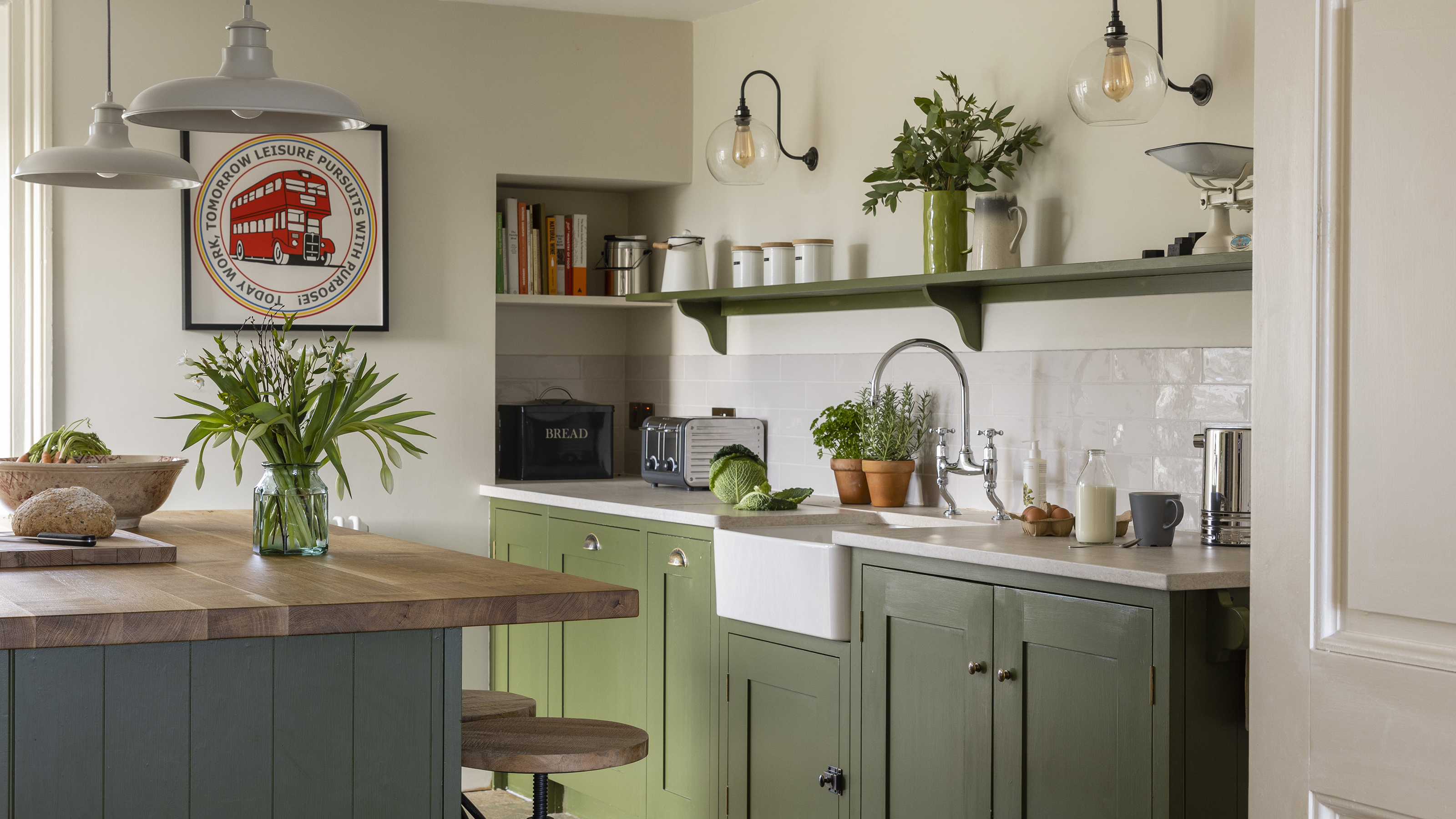
It goes without saying that your choice of kitchen cabinets is the most important part of your kitchen design. But aside from the looks, have you thought about what your units will be made from?
Deciding on the best materials for kitchen cabinets is key to making sure your project falls within your budget, has longevity and looks the part.
The most common options include solid wood, veneered, laminate or foil-wrapped panels, MDF, plywood or even reclaimed wood. We’ve asked the experts for their tips on choosing the best material for kitchen cabinets and your space to help you narrow down your search.
Where to start when deciding on the best kitchen cabinet material
Budget, value for money, longevity, aesthetics, functionality, style and ease of repair are all important things to consider.
‘Ultimately, you must be careful to choose the right materials for the specific project, considering how they work together both from a functional and design aspect, to ensure that the finish is maintained over time,’ advises Nathan Kingsbury, creative director of Nathan Kingsbury Design.
You should think about your kitchen style too. ‘We use a solid oak for all our shaker frames where a client wants to see the wood grain finish and we use solid maple for a flat finish shaker frame. For slab doors a different material is used – we opt for a very durable particleboard which is very strong and stable,’ explains Jayne Everett, creative director at Naked Kitchens.
For a slick, contemporary look in your kitchen, you’ll want to focus on clean lines, modern materials, such as glass, stainless steel, concrete or glossy surfaces, and a streamlined colour scheme.
Sign up to our newsletter for style inspiration, real homes, project and garden advice and shopping know-how
1. Solid wood
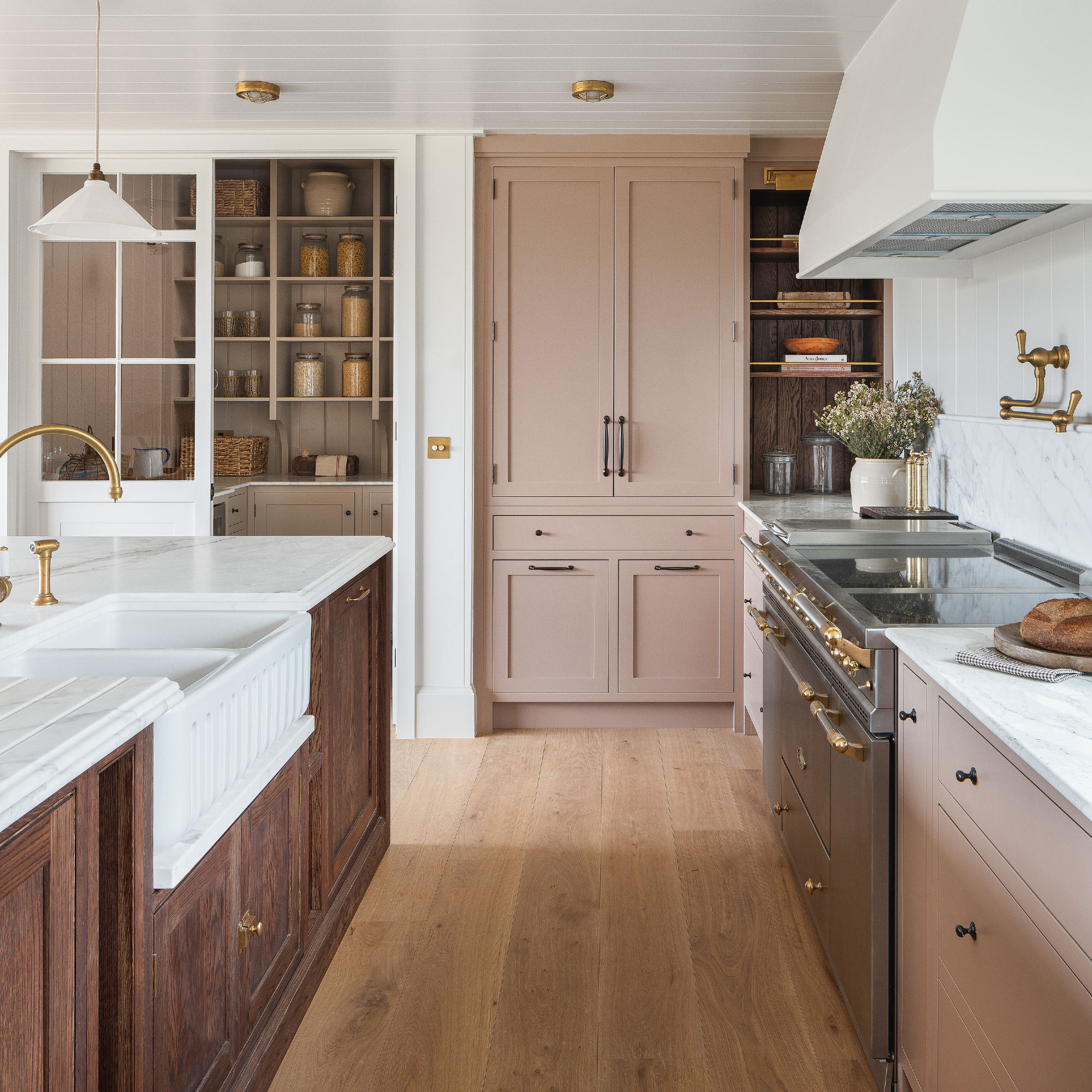
Solid wood kitchen cabinets come in at the top end of the budget scale. But if longevity is your main focus, which is great from a sustainability perspective, then investing in solid wood units is a great idea. Shaker kitchens are often made from solid wood to match the traditional appeal, but there are increasingly becoming available in more affordable materials.
These kitchens are usually made using traditional joinery techniques such as mortise-and-tenon or dovetail joints and have a certain quality character to them.
Certain types of wood work better than other hardwoods – like oak, maple and ash – are often used as they are less prone to warping than softwoods. And since the kitchen is a wet or humid environment with regular temperature changes, you want wood that can stand up to the challenge for a long time.
Both carcasses and door and drawer fronts can be made from solid wood and the doors can either be waxed or varnished for a natural look, or painted (and later repainted) in a shade of your choice. Just be sure that whatever wood you choose, it’s responsibly sourced with FSC certification.
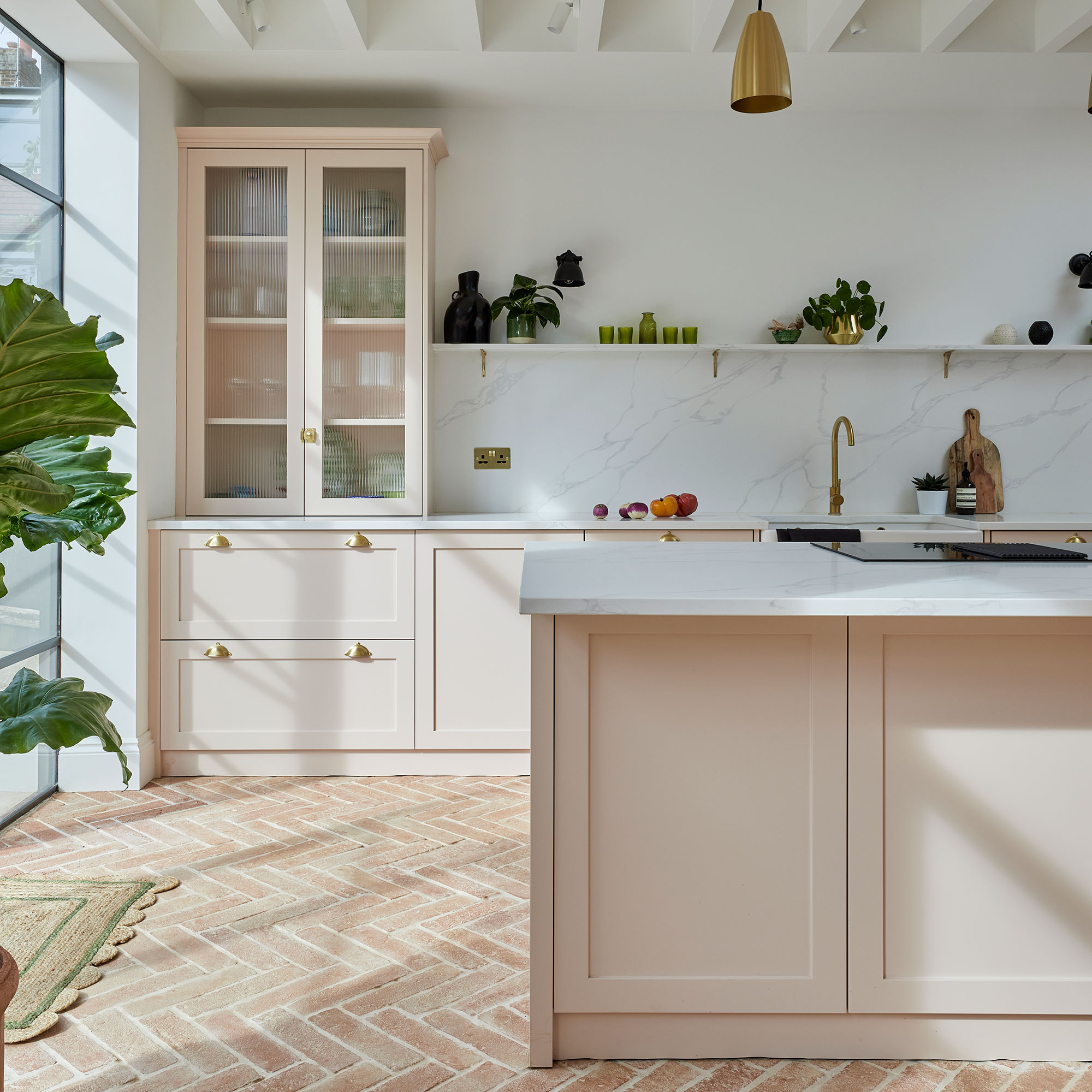
Solid timber throughout is great for a more traditional look, particularly where the construction and assembly methods are key aspects of the finished aesthetic. Due to its durability and timeless appeal, solid timber brings with it a natural beauty and warmth that is versatile enough for traditional kitchens as well as modern, contemporary homes,’ says Nathan.
It's important to remember though, that different wood species have varying levels of hardness and durability, and the quality of construction and finish can also affect the longevity of your cabinets.
‘A drawback is that they do require regular maintenance so be prepared to devote time and effort to them, including cleaning, polishing, and occasionally, refinishing. They are also sensitive to moisture, so if exposed to liquid for an excessive amount of time, your cabinets do have the potential to warp. The important thing is to speak to your kitchen designer or maker to find the right cabinet material that suits the needs of your family and home, as well as meet any requirements you have aesthetically,’ says Nathan.
2. MDF
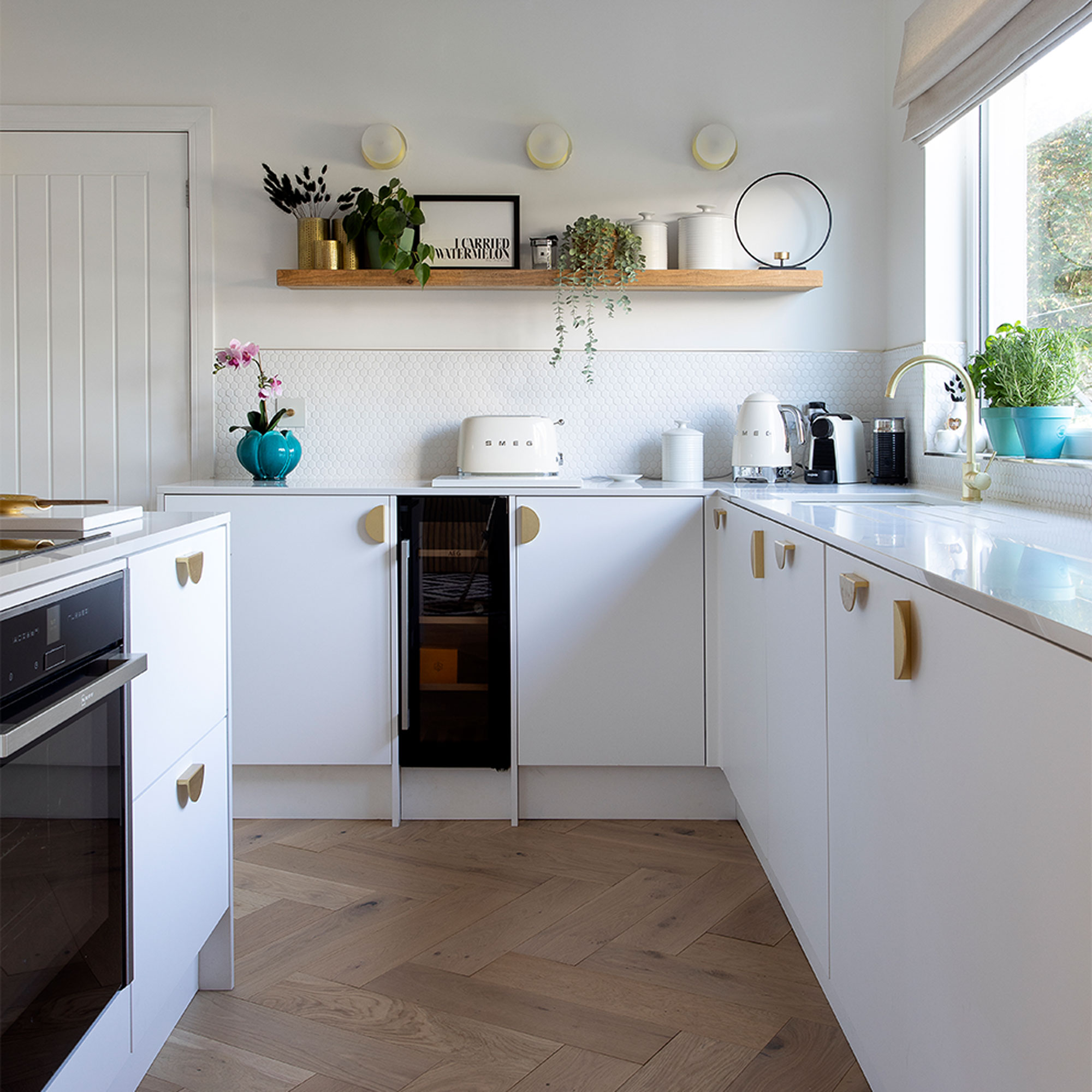
Medium-density fibreboard (MDF) is made from a wood fibre that’s mixed with resin and wax that’s compressed. You’ve most likely already got furniture made from MDF (hello flatpack) or seen large sheets of the stuff in the DIY store.
MDF is more affordable than solid wood and is a common choice for modern kitchen ideas thanks to there being so many styles available and it being more structurally sound, resisting warping. Kitchens made from MDF will typically have the material as the carcass and door or drawer front but be lined with veneer or foil to form what you see – whether that’s a wood-look unit, high-gloss design or colour. But it is also possible to paint the MDF.
‘MDF doors with laminate or foil finishes may look appealing but can be vulnerable to peeling or bubbling when exposed to kitchen heat and humidity, reducing their lifespan. Painted MDF doors, on the other hand, offer a more durable and long-lasting finish that can be easily updated over time, making them a better choice for kitchens,’ says Jen Nash, head of design at Magnet.
When choosing between foil-wrapped MDF doors and painted options, several key factors come into play. ‘Foil-wrapped MDF doors are often a more economical choice, providing a sleek, modern finish at a lower cost. However, the vinyl coating on these doors can wear off over time, diminishing their protective qualities and aesthetic appeal,’ adds Jen.
‘Additionally, while painted kitchen doors can be refreshed or repainted with relative ease, foil-wrapped MDF doors are far more difficult to update. The vinyl surface requires a complicated refinishing process that is not typically achievable with a simple DIY lick of paint.’
MDF may have been seen as a flimsy option, these days thicker boards result in cabinets that are more sturdy and robust. Make sure to go for a good-quality, thicker option to get the benefits. Plus, from an eco point of view, a lot of MDF is now made using recycled wood.
You might also come across high-density fibreboard (HDF) which is similar to MDF. It’s an engineered wood that has been compressed to higher levels providing a strong, durable option for kitchen cabinets. It’s a stronger option than MDF.
3. Wood veneer
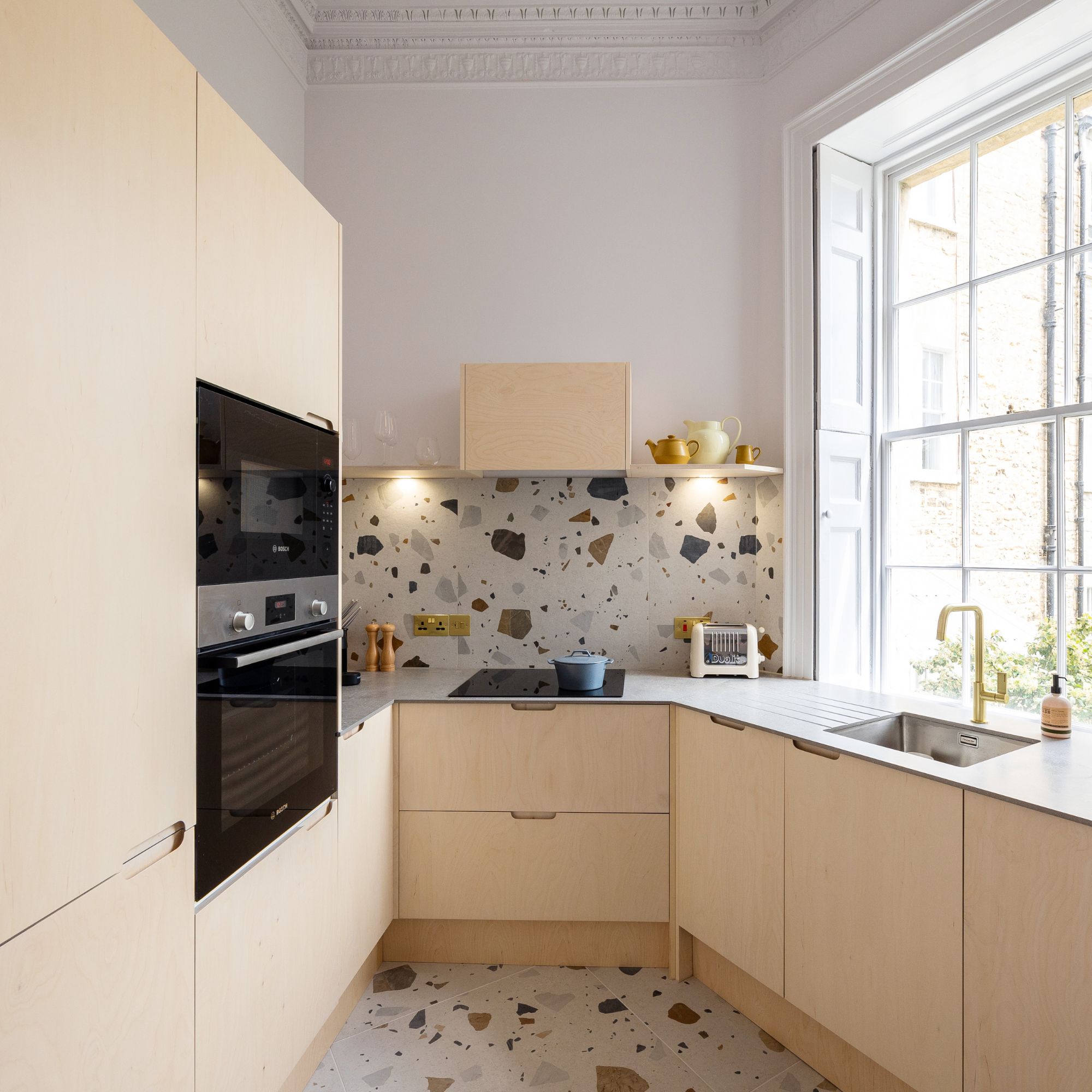
Kitchens with a MDF or plywood core can be faced with timber, also known as veneer. Veneer is a thin sheet of real wood that’s glued onto the surface so you get the look of the wood without it running all the way through the door front, making this a lower cost option if you want a wood-look kitchen.
Veneers come in a whole host of varnished, oiled or painted designs using timbers such as oak, walnut or ash, for example.
When comparing wood veneer to solid wood, wood veneer is often a more stable and economical option.
‘Unlike solid wood, which can be susceptible to warping and cracking due to changes in humidity and temperature, wood veneer is dimensionally stable because it is applied to a stable core, reducing the risk of distortion,’ says Jen. ‘While solid wood can withstand moisture and last longer in some cases, wood veneer is far more sturdy when it comes to infestation. Additionally, wood veneer allows for the look of premium wood at a lower cost.’
4. MFC
Melamine-faced chipboard (known as MFC) is the most affordable material for kitchen units.
The core of the units is made from a chipboard or particleboard core (a mix of waste wood chips, sawdust and resin), while the melamine on the outside can create a range of looks, including solid matt or gloss colours, wood-like designs and even mimic concrete or marble, or have metallic finishes.
‘Most major retailers use MFC while MDF is the second most popular,’ says Jen. ‘Magnet cabinets are made from MFC, a composite wood that not only stands the test of time but also is incredibly durable, water-resistant, and scratch-proof. It’s also a great choice for a long-lasting option for kitchen doors withstanding high temperatures and humidity.’
Any drawbacks? When the MFC is low quality or thin, the initial benefits will quickly disappear. If low-quality facing is scratched or damaged, moisture can get into the core and cause it to swell and the cabinets could sag under heavy weight when the material is poor grade.
5. Plywood
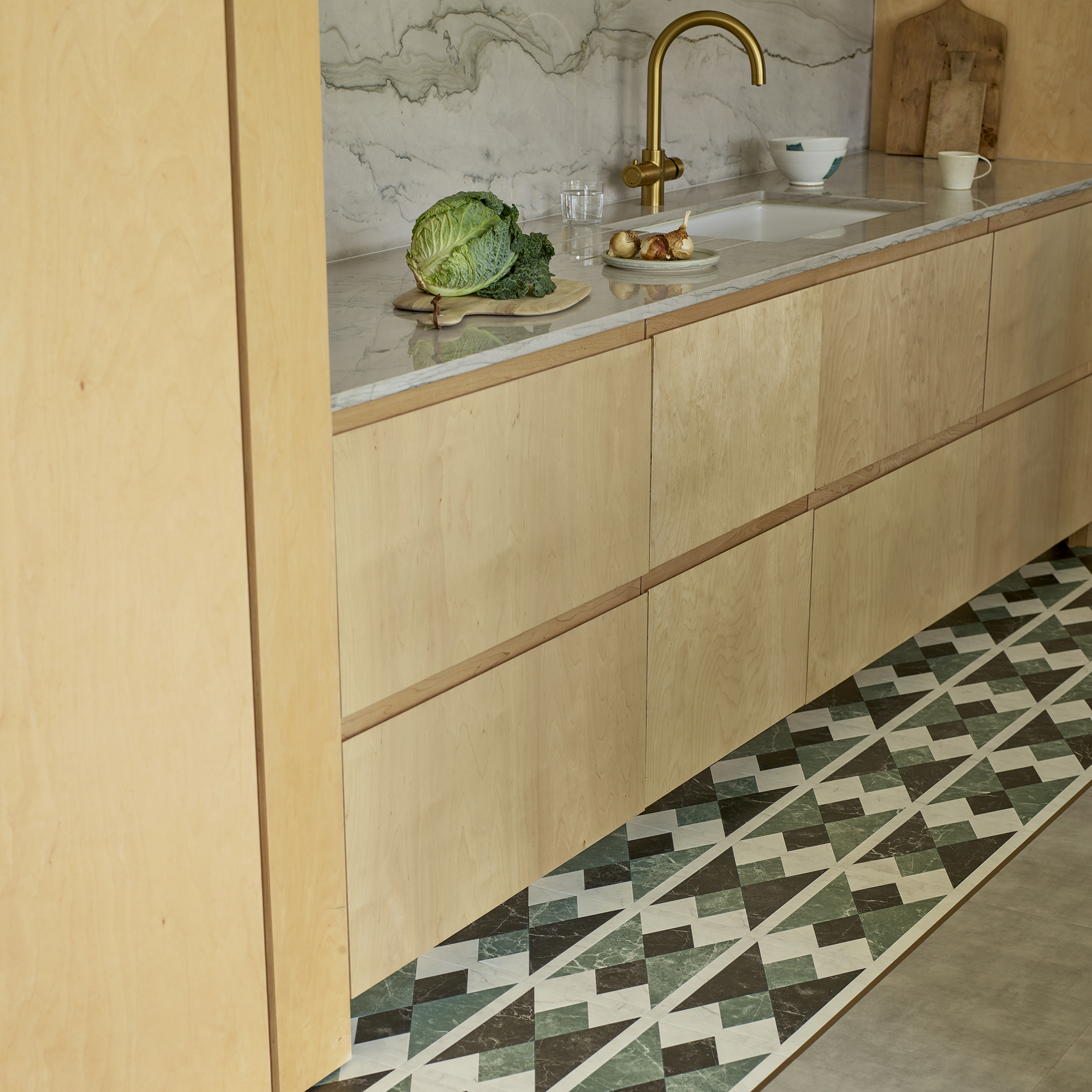
Plywood is made by bonding multiple thin layers of wood together using glue. This results in a stable material that’s resistant to humidity and moisture, strong, and durable. It is stronger than alternative materials such as MDF and MFC.
It’s a more sustainable option so long as it’s made from responsibly sourced timber. ‘Plywood is manufactured with very few chemicals, containing lower levels of formaldehyde and VOC than many of the alternatives used in the mainstream kitchen market. Compared to MDF, the glue to wood fibre ratio is considerably lower,’ says Steve Threlfall, creative director at The Life of Ply, a social enterprise.
‘Choosing a furniture grade ply such as birch or poplar will mean the wood is resistant to warping and rotting, leaving you with a beautiful kitchen that will often last a lifetime,’ says Steve, who also says plywood is a great option for a budget kitchen refresh as the doors can be fitted to existing units. ‘It’s more common to add plywood doors, drawers and panels to standard carcasses, but it’s also possible to have plywood carcasses made.’
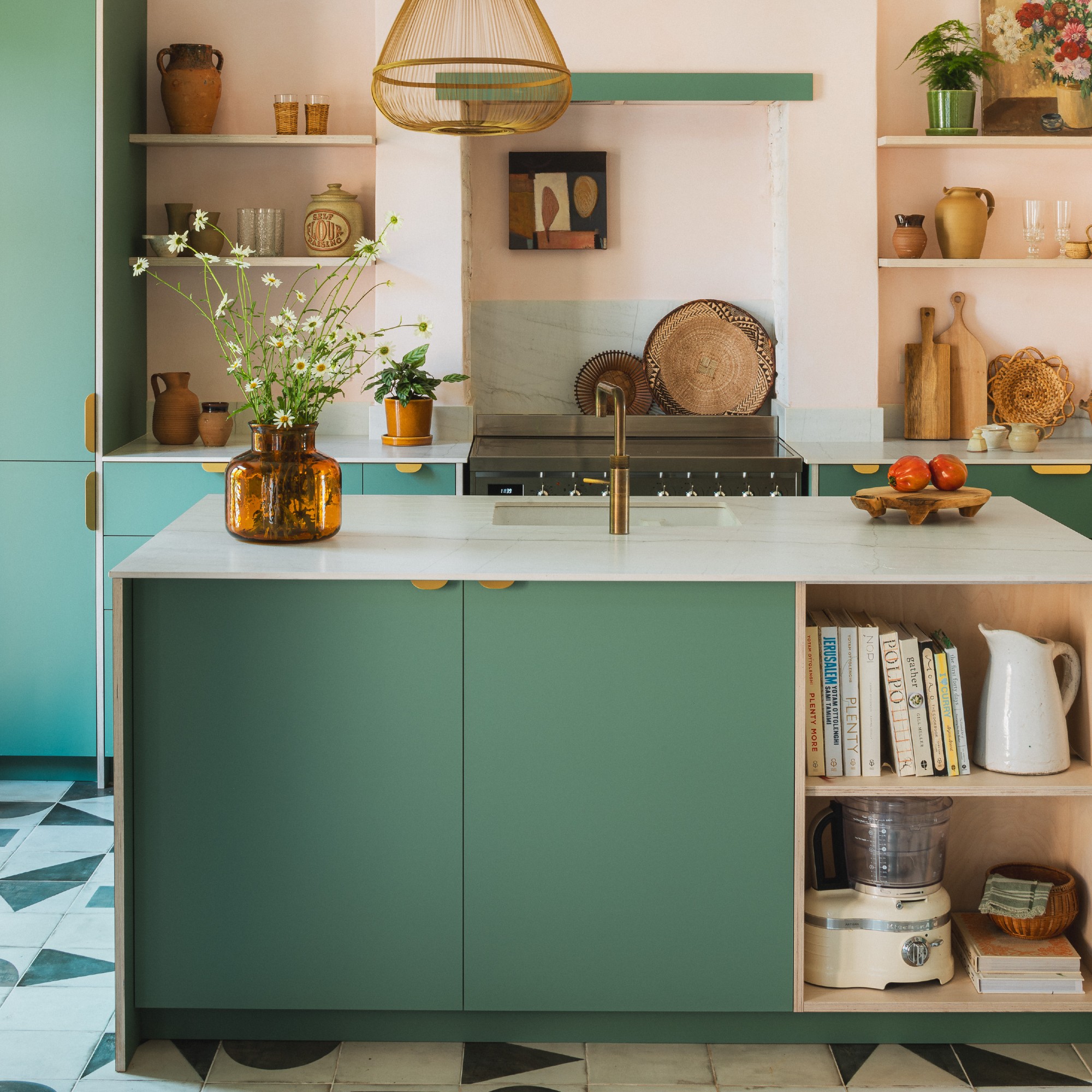
Cost-wise, plywood sits around the middle of the market so can offer a good balance for budget and longevity. It is more affordable than solid wood, but more expensive than MDF and MFC.
In terms of style, plywood kitchens can be left exposed and oiled for that distinctive pale wood look, or you can leave the end grain visible when choosing coloured laminate or veneer. Or, the fronts can be painted.
‘At The Life of Ply we are seeing a trend of using coloured laminate faced plywood on base units and oiled plywood on the overhead cupboards and bespoke shelves’, adds Steve.
To maintain a plywood kitchen, you’ll need to ensure the material is sealed with an oil, which may need to be redone over time to ensure that it stays in good condition. If combined with laminate facings, plywood edging would need to be periodically treated. It’s also worth noting that plywood is heavy.
6. Reclaimed wood
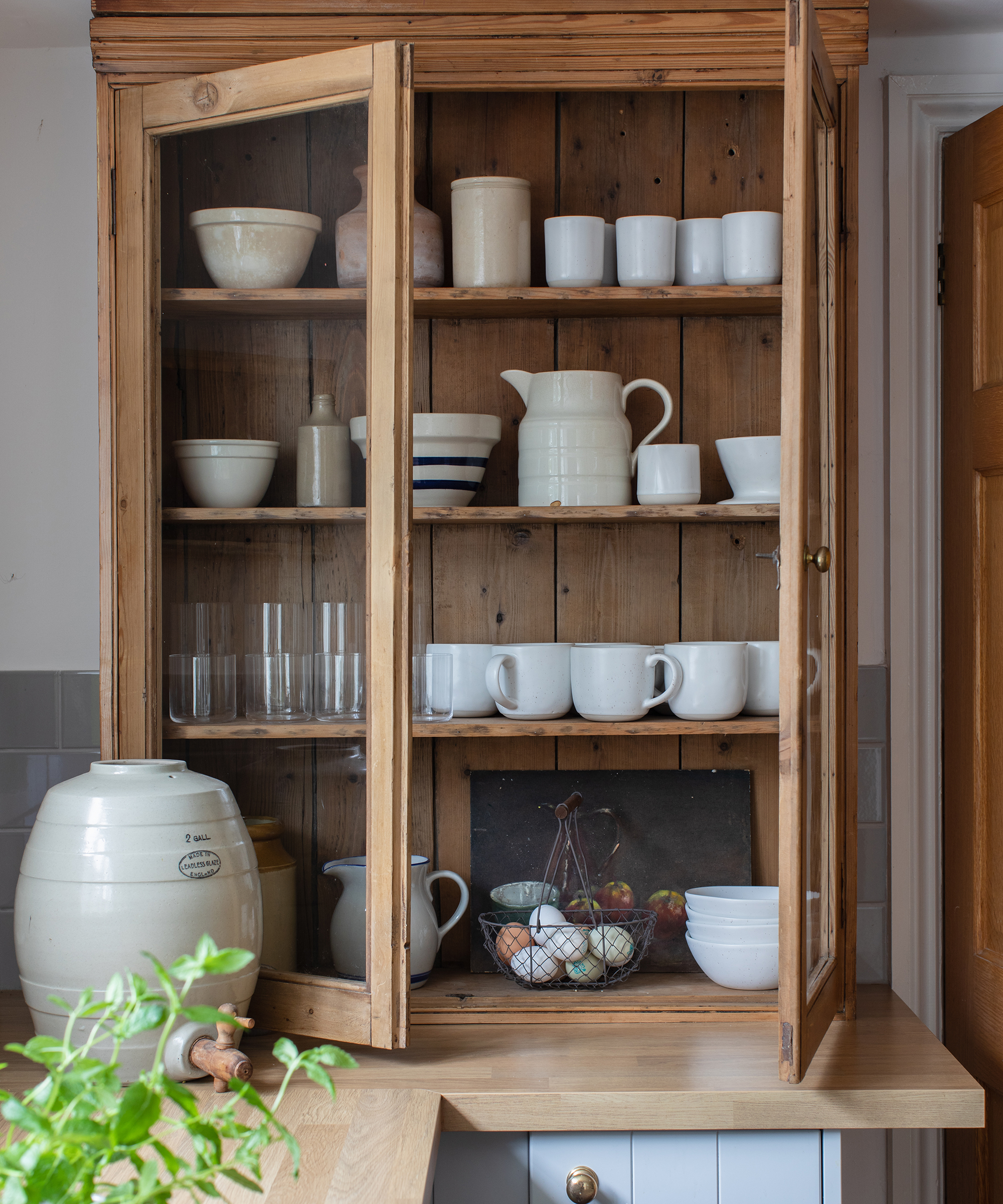
Add character and sustainability points to your kitchen design with reclaimed wood. It creates a new lease of life for the original material and is therefore the ideal choice if you’re considering an environmentally friendly solution in your kitchen.
You can use reclaimed wood for the complete unit in the kitchen, with additional stability measures carried out. ‘We would engineer the reclaimed wood, where the top 5ml of the reclaimed element is removed and then pressed onto plywood for more stability,’ says Alex Main, director of The Main Company.
Reclaimed wood can be incorporated into the kitchen in a variety of ways and mixed with a range of materials and surfaces. The key is finding the right surface solution for each area, and ensuring that the style and design will be cohesive, bearing in mind getting total consistency will be difficult.
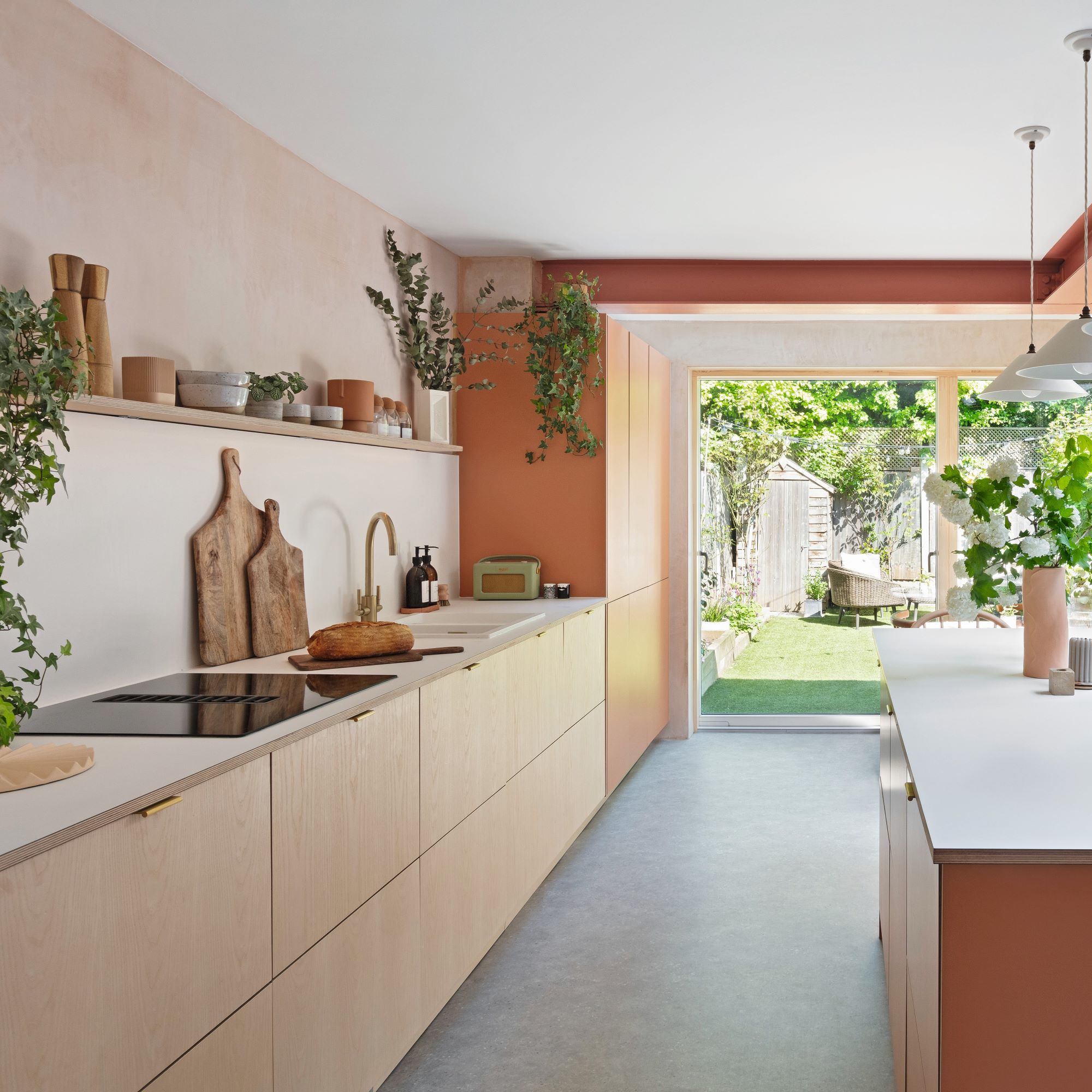
‘One of the cons for using wood in the kitchen, especially reclaimed wood, is that the surface will not be completely flat so can prove a little harder to work with. As a natural product, wood can be susceptible to movement or warping so needs to be installed properly by a professional to avoid the chance of this happening. Due to its natural form, no piece of wood is identical and therefore no kitchen using reclaimed wood will be either,’ says Alex.
Although a repurposed material, reclaimed wood will typically cost more due to the work involved in reconstructing or reconfiguring it to create a new kitchen scheme. ‘It is a more particular surface product and therefore required more work than a new solid wood,’ says Alex.
FAQs
What is the most durable material for kitchen cabinets?
MDF or HDF provide a good balance between affordability and durability and alongside MFC, are the most common options for a new kitchen. A dense particleboard provides good stability and long-lasting qualities.
Plywood doors are another great option. ‘The most durable will be a lacquered birch ply with a timber veneer,’ says Jayne Everett, creative director at Naked Kitchens. ‘But the ply option will cost considerably more.’
Is MDF or wood better for kitchen cabinets?
When selecting kitchen cabinets, MDF and solid wood each offer distinct advantages. MDF is budget-friendly, sustainable, and less prone to warping, making it a practical choice for most kitchens. ‘It's lighter and generally easier to maintain, though it may not provide the same longevity as solid wood. On the other hand, solid wood offers a timeless, high-end aesthetic and superior strength, ideal for custom furniture or areas requiring extra durability. However, it comes with a higher price tag and requires more maintenance,’ says Jen Nash, head of design at Magnet.
Ultimately, MDF is a cost-effective and environmentally conscious option, while solid wood delivers lasting elegance and robustness. ‘For kitchen cabinets that are closer to sources of moisture, MDF is often a more practical choice, as it keeps costs down while providing a durable and smooth finish. Properly finished MDF cabinets with proper sealing can withstand the demands of a busy kitchen without the risk of warping but fall short when it comes to heat exposure,’ says Jen.

Lindsay Blair is an editor, writer & content consultant with a focus on home design, interiors & lifestyle. Previously editor KBB Magazine and thesethreerooms.com, she has also contributed to The Times, Ideal Home, Build It & more.